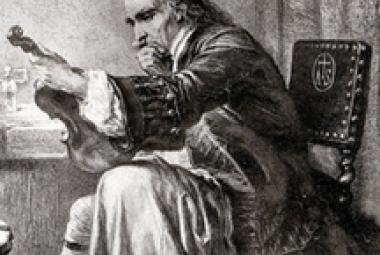American Bandstand is an American music-performance show that aired in various versions from 1952 to 1989 and was hosted from 1956 until its final season by Dick Clark, who also served as producer. The show featured teenagers dancing to Top 40 music introduced by Clark; at least one popular musical act — over the decades, running the gamut from Jerry Lee Lewis to Run DMC — would usually appear in person to lip-sync one of their latest singles. The show’s popularity helped Dick Clark become an American media mogul and inspired similar long-running music programs, such as Soul Train and Top of the Pops. (More from Wikipedia)
The song was banned in several major radio markets, including New York and Boston (perhaps self-censorship would be a better term, since it was mostly the DJ’s who took it upon themselves not to play the song) due to the fear that its rough sound glorified juvenile delinquency. Even Dick Clark sort of tip-toed around the controversy when the song was introduced on American Bandstand: He never actually mentioned the name of the song.
(February 2013)
Ritchie Valens released just two 45’s but still showed incredible versatility. His first, “Come On, Let’s Go” is now regarded as a straight-up rock and roll classic, but it failed to chart. Writing in 1998, Billy Vera recalls “first hearing [“Come On, Let’s Go”] on Alan Freed’s TV Dance Party, a local New York equivalent of Dick Clark’s American Bandstand. It was a record which really grabbed my teenaged ears. I had never heard anything quite like it. It had a much ‘thicker’ sound than anything by Elvis, Chuck Berry, Gene Vincent or even Eddie Cochran. For thickness, the only thing that came close was Bo Diddley.”
* * *
Remarkably, the Big Bopper wrote “Chantilly Lace” while on the way to the Gold Star Studio in Houston; he had originally intended it to be the “B” side for “Purple People Eater Meets Witch Doctor”, but “Chantilly Lace” was on the charts for 22 weeks and topped out at #6. For shows like American Bandstand – where the performers lip-synch to their records – the Big Bopper had a hard time matching his improvised speaking parts and inflections.
(June 2013/1)
* * *















